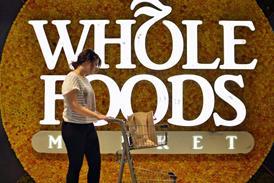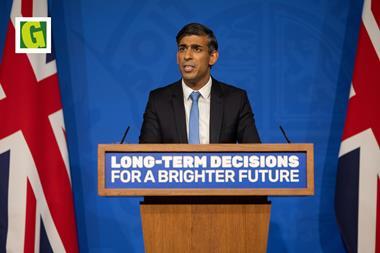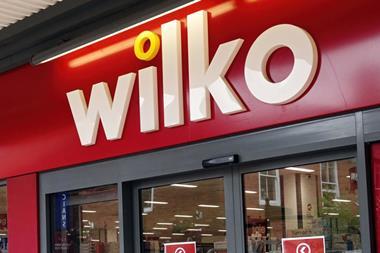Following these five golden rules will help ensure that brand extensions do not fall by the wayside, says Doug James
After a few years swimming in the NPD swamp, I've managed to work out a set of golden rules that save me a lot of pain.
They are not the whole story internal politics can make or break a launch and are often the reason for the wrong thing being launched or the right thing not being launched. But here are the outward-facing factors.
Firstly, know your brand. Sounds obvious but, as we sit polishing our brand onions, brand keyholes or whatever model we employ, do we really have a sense of the soul, the true DNA of our brand? If the answer is a confident 'yes', how is it that only two out of every 10 new launches reach anything like their potential?
Secondly, be your user. We have data coming out of our ears. It's easy to forget that our consumers are not an abstract noun, they are also human beings. Economics has only recently discovered that people do not behave rationally. Sometimes, this is a lesson NPD departments still have to learn.
The people who buy a brand are partners in that brand; they have invested financially and emotionally and are often ahead of the brand owner in their vision of where it can go. Telling them you've come up with a better taste, a healthier version, can undermine that partnership: you're effectively telling them they've been wrong.
Number three, meet real needs. Let's be honest, no one out there is saying 'Gosh, I wish they'd invent another kind of humus.' Sainsbury's already offers 11. Yet people still put something into the market just because someone else has. That's not genuine NPD. But there are strong trends out there healthier eating without compromise, artisanship, eco-responsibility, exploration, personalisation. Plenty to use.
Four, stretch the right limbs. Looking back at your onion or keyhole, there's a lot to choose from. Probably too much, but that's another matter. Historic disasters like Cadbury's Jam or Bic Perfume and more recent failures like Kellogg's Nature's Pleasure show the pitfalls. If your new variant does not feed directly from your parent brand and does not feed back, something is very wrong.
And finally, grow, don't eat. In the mid-90s, The Grocer did an analysis of the five leading brands. They had increased SKUs by 28% and turnover by 4%. Modern shelf management techniques would make such a defensive strategy untenable. A new launch has to take you and your partner consumers somewhere new where you both want to go.
Let's take a recent successful launch. Innocent Veg Pots. If any company knows their brand it is these guys. At least half our briefs refer to them. Friendly, irreverent, painlessly healthy, the whole thing hangs together as a proposition and attitude. No one involves their consumer better. From the early pre-launch yes/no bins and the phone-in joke line to the online video of the agm, Innocent connects. And every time they connect, they learn.
The limbs that are being stretched with Veg Pots are core properties easy, upbeat, painlessly healthy that feed from the brand and feed back into it. And, finally, the new line pushes into a new sector without risk of cannibalisation.
Is it the most delicious product you've ever tasted? No. Is it the best design in the world? No. It is, quite simply, right.
Doug James is MD of creative agency Honey.
After a few years swimming in the NPD swamp, I've managed to work out a set of golden rules that save me a lot of pain.
They are not the whole story internal politics can make or break a launch and are often the reason for the wrong thing being launched or the right thing not being launched. But here are the outward-facing factors.
Firstly, know your brand. Sounds obvious but, as we sit polishing our brand onions, brand keyholes or whatever model we employ, do we really have a sense of the soul, the true DNA of our brand? If the answer is a confident 'yes', how is it that only two out of every 10 new launches reach anything like their potential?
Secondly, be your user. We have data coming out of our ears. It's easy to forget that our consumers are not an abstract noun, they are also human beings. Economics has only recently discovered that people do not behave rationally. Sometimes, this is a lesson NPD departments still have to learn.
The people who buy a brand are partners in that brand; they have invested financially and emotionally and are often ahead of the brand owner in their vision of where it can go. Telling them you've come up with a better taste, a healthier version, can undermine that partnership: you're effectively telling them they've been wrong.
Number three, meet real needs. Let's be honest, no one out there is saying 'Gosh, I wish they'd invent another kind of humus.' Sainsbury's already offers 11. Yet people still put something into the market just because someone else has. That's not genuine NPD. But there are strong trends out there healthier eating without compromise, artisanship, eco-responsibility, exploration, personalisation. Plenty to use.
Four, stretch the right limbs. Looking back at your onion or keyhole, there's a lot to choose from. Probably too much, but that's another matter. Historic disasters like Cadbury's Jam or Bic Perfume and more recent failures like Kellogg's Nature's Pleasure show the pitfalls. If your new variant does not feed directly from your parent brand and does not feed back, something is very wrong.
And finally, grow, don't eat. In the mid-90s, The Grocer did an analysis of the five leading brands. They had increased SKUs by 28% and turnover by 4%. Modern shelf management techniques would make such a defensive strategy untenable. A new launch has to take you and your partner consumers somewhere new where you both want to go.
Let's take a recent successful launch. Innocent Veg Pots. If any company knows their brand it is these guys. At least half our briefs refer to them. Friendly, irreverent, painlessly healthy, the whole thing hangs together as a proposition and attitude. No one involves their consumer better. From the early pre-launch yes/no bins and the phone-in joke line to the online video of the agm, Innocent connects. And every time they connect, they learn.
The limbs that are being stretched with Veg Pots are core properties easy, upbeat, painlessly healthy that feed from the brand and feed back into it. And, finally, the new line pushes into a new sector without risk of cannibalisation.
Is it the most delicious product you've ever tasted? No. Is it the best design in the world? No. It is, quite simply, right.
Doug James is MD of creative agency Honey.











No comments yet